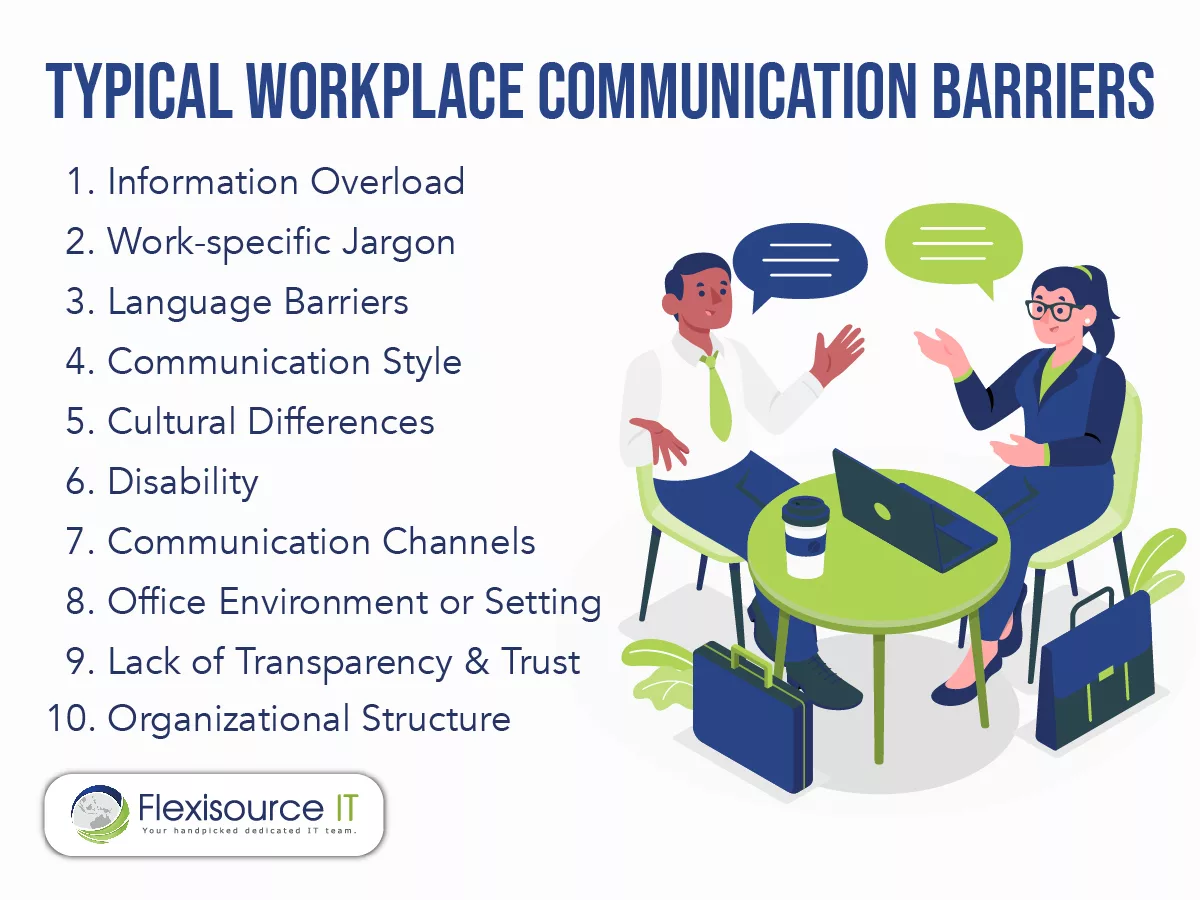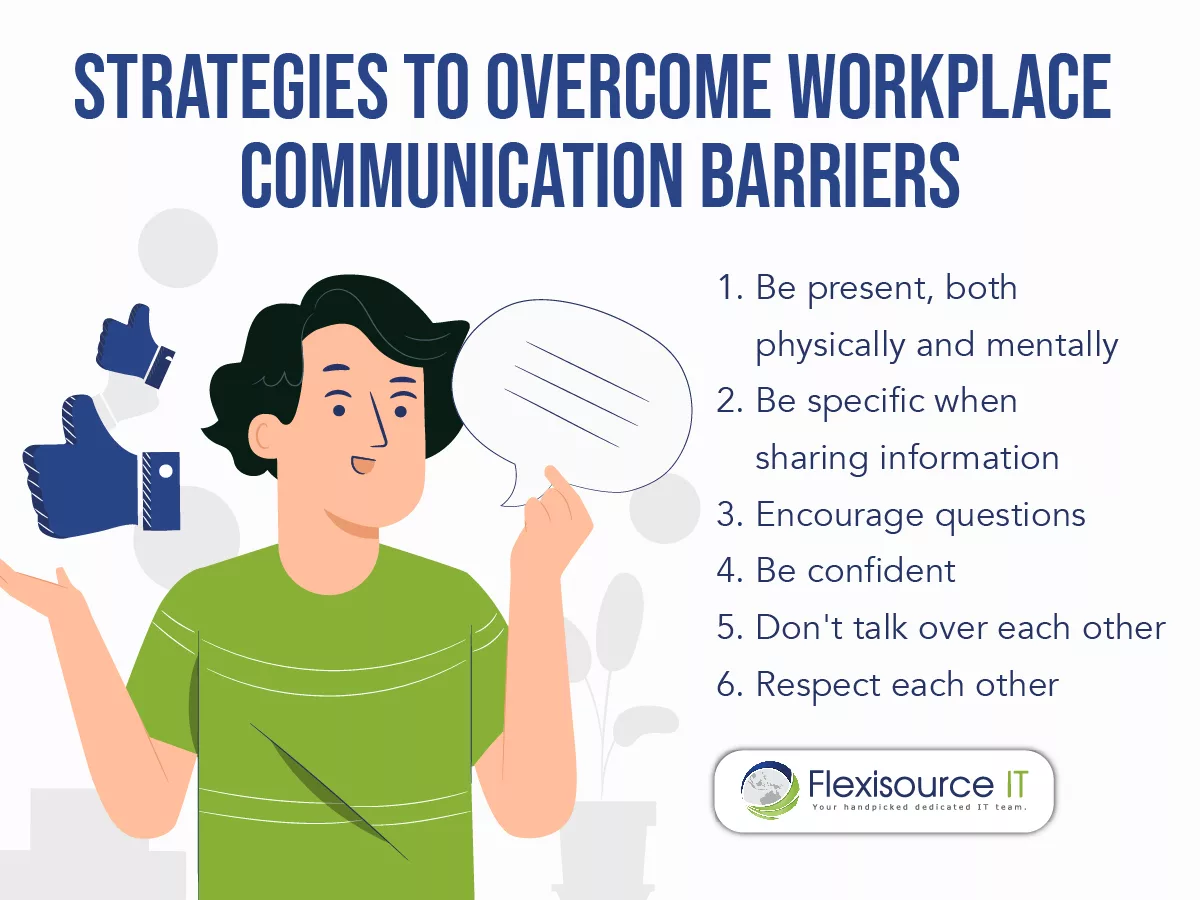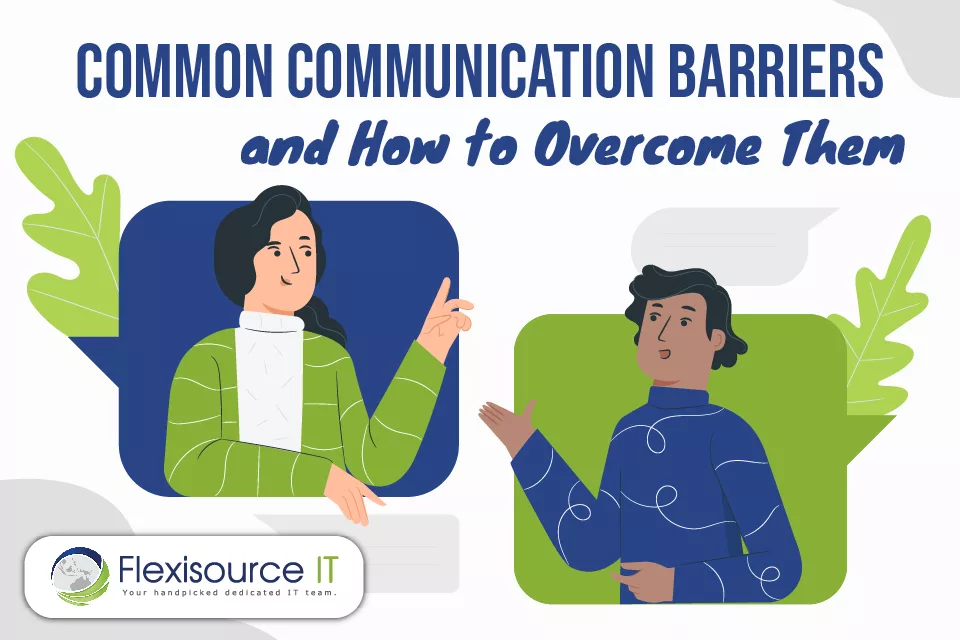Effective communication is essential in every work environment. It is vital for project completion and achieving business goals. It helps build positive relationships among coworkers, increase job satisfaction, and boost employee morale.
However, due to the global pandemic and social distancing restrictions, many companies face communication barriers worldwide. Employees globally are forced to work from home and depend on technologies to communicate with management and colleagues. And often but not always, relying on digital tools can cause a lot of communication barriers in the workplace.
As such, many businesses try to find ways on how to leverage this issue. Likewise, this article will help you learn common communication barriers and how to overcome them.
Table of Contents
What are communication barriers?
Before tackling the examples of communication barriers, it’s essential to learn the definition of communication barriers. Basically, communication barriers are factors that get in the way of receiving or understanding a message. Usually, these barriers prevent the communicators from getting and accepting messages and information, thoughts, and ideas. It can also distort the message being conveyed, causing confusion and misunderstanding among people.
Most common communication barriers in the workplace
Typically, communication barriers in organizations are caused by physical, emotional, cultural, social status, or language differences.

As such, here are some most common obstacles in the workplace:
- Information Overload
Information Overload could probably be one of the most common communication barriers faced by the employee. Employees believe that clarity in communication in the workplace is essential. They try to deliver the best information they can to make the listener understand their message.
Still, too much information can also cause as much damage as relying on too little information. When sharing information during a meeting or training, it’s essential to deliver the summary rather than chucking them with too much detail that they could barely comprehend. So, the next time you are relaying a piece of information, you might want to focus on your key points rather than providing too much information.
- Work-specific Jargon
Another most significant common communication barrier is the use of jargon. It’s common knowledge that each industry has its own jargon or terminology used by employees daily. Using this jargon can be helpful and practical when speaking to someone from the same profession or industry.
However, jargon can vary from company to company. And to outsiders, like clients or partners, terminology can be confusing. As such, overusing acronyms and jargon can diffuse the real meaning of your message and lead to misunderstanding.
- Language Barriers
Having a difference in language is probably the top common communication barrier worldwide. Communication can be complex when people don’t understand a word you are speaking. If the speaker and receiver are not using the same language and words, communication has no meaning. It prevents the message from being conveyed.
Likewise, language difference is not the only one faced by many workplaces. The accents and dialects of people can also differ in places. Although the language is generally the same, some dialects use it differently, leading to conflict.
- Communication Style
Having different communication styles is another common communication barrier within the workplace. Every employee has their signature communication style. Some may be a little timid, and others can be straightforward. Some used very detailed data, and others’ key details are enough.
And occasionally, some employees might find another employee’s communication style offensive and challenging to understand. This can often cause conflict between employees.
- Cultural Differences
Another common communication barrier has cultural differences. Culture is an essential part of communication. It shapes how people communicate, identifies one’s beliefs, and defines their values.
There is no correct or incorrect way of doing things. However, when someone is so engrossed in their values and beliefs, they often dismiss other people’s values. This can create a communication barrier between people as they constantly try to prove each other’s aptness.
Similarly, culture can also define some of the words we use in our daily conversations. While these may seem comprehensive to us, in some places, however, these words may not even be used.
- Disability
Likewise, hearing, speech, and visual impairments can make it difficult for people to communicate. It can complicate collaboration and teamwork.
It’s common for people to be disrespectful to persons with disabilities. According to Communication Disabilities Access Canada, people often assume that people with disabilities are incompetent. Some ignore the person and try to defer the question to the accompanying person or someone they can communicate with better.
It’s essential for management to build a safe work environment for people with disabilities and educate all employees about communication strategies.
- Communication Channels
There are a lot of communication channels people use worldwide. From chatting applications, emails, phone calls, text messages, and social media, it’s harder for employees to choose what channel to inform people quickly and effectively.
According to Gallup’s research, 74% of employees miss out on company news and updates. And as a result, an employee spends approximately 20% just to find the internal information they need.
- Office Environment or Setting
Office setting can also cause common communication barriers among employees. As mentioned earlier, many companies are forced to implement a work-from-home location due to the COVID-19 pandemic. Proximity or distance can often cause a problem when engaging an employee in the daily operation.
Likewise, the office layout can also cause communication barriers. Not seeing non-verbal cues like posture, gesture, and general body language can make communication less effective. Some may even read behind the lines on a public statement. This can cause issues among colleagues.
- Lack of Transparency & Trust
It is complicated to rely on information when there is no trust and transparency in the office. For example, suppose an employee believes that the manager does not trust their words or opinion. In that case, they will often feel anxious and sometimes retreat from speaking their minds.
This can cause vital information to be missed out, and issues are detected early.
- Organizational Structure
Hierarchy can also be a culprit for ineffective communication. Information can easily be siloed, distorted, or lost when it travels through each level of hierarchy. Employees may often be afraid to share or communicate with their superiors. As such, some may misstate their opinion just to be in favor of what their manager thinks. It can often result in a lack of engagement and productivity among staff.
How to overcome barriers of communication
The key to overcoming the communication barrier can depend on a lot of factors. Communicators rely on individuals listening, understanding, and processing skills.

The speaker needs to make the message clear and for the listener to make sense of the news. Perse, try the following tips to address common communication barriers at work and help your employees improve communication.
- Be present not only physically but also mentally
It may take a lot of practice to focus on other people when they are sharing their ideas. However, employees need to remind themselves to concentrate and be open-minded when listening. Listen attentively and wait until you provide feedback or your opinions.
- Be specific when sharing information
When relying on important information, make sure that it’s specific and easy to remember and understand. Data needs to be concise and succinct when being shared. Employees can try to summarize the details or provide bulleted key take away when relying on the information.
- Encourage Questions
When communicating with a colleague, employees need to be inviting and prompt others to share. Allow them to ask questions to make the exchange dynamic
This helps both perspectives understand the information, make it clear, and avoid any potential issues. In addition, they can also learn about each other’s communication styles and adjust based on the other’s needs.
- Be confident
As mentioned earlier, fear is a standard communication barrier among employees. That is why confidence is necessary when conveying a message. When talking to colleagues or managers, try eliminating words like “um, ah, or like.” You also need to exclude phrases such as “I think that,” making it look like you are unsure about the information.
Thus, when talking, consider using a properly timed pause to collect your thoughts and reflect on what you need to say. Likewise, your tone should be full of optimism and enthusiasm.
- Don’t talk over each other
Disrespect is another common communication barrier that is faced by a lot of employees. A lot of workers are vocal about their opinions and judgments. As such, it’s essential to wait for your turn to talk.
A lot of the most assertive communicators spend more time listening than speaking. Remember to absorb information first, analyze it, and summarize major points. Clarify any misunderstanding when the speaker provides the opportunity to ask questions. Be respectful to your response or when sharing opinions.
- Be respectful
It’s essential to be respectful when communicating, whether it’s a disability or someone who doesn’t speak perfect English. Ensure that when communicating with your team, try not to raise your voice or over-enunciate. Speak slower instead of forcefully. Since it could send out a wrong message to the listener. Remember that people face many hurdles, and this has nothing to do with their ability to grasp the message.
Likewise, management needs to accommodate these challenges that employees face. They can provide ESL training for employees who cannot speak English perfectly. Similarly, they can also teach other staff to learn ASL.
Conclusion
Maintaining effective communication at work can be difficult, especially when facing these common communication barriers. However, communication is critical as it builds teamwork, creates a positive work environment, and motivates staff.
If you are facing issues communicating with remote staff, Flexisource IT can help you! We are an expert in employee engagement and retention. Need some help? Contact us to learn more.
Pamela is a full-time content writer and a lifelong Philomath. Her previous experience as a research analyst made her passionate about traveling the world and understanding how it works. During her day off, you can often find her indoors, writing stories or oil painting.


